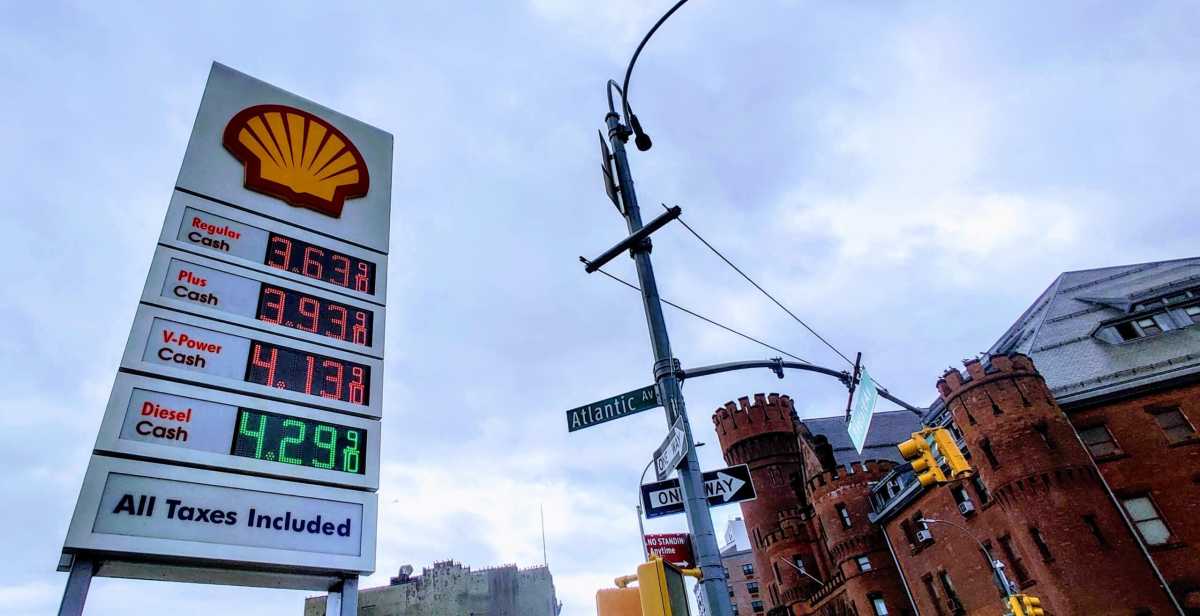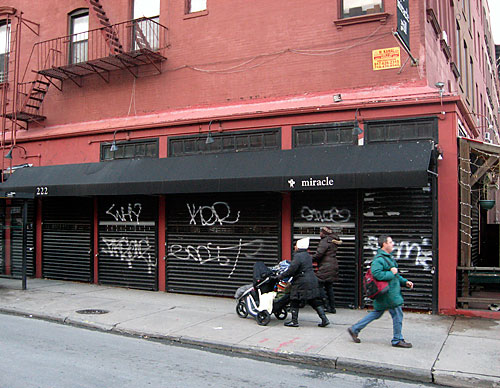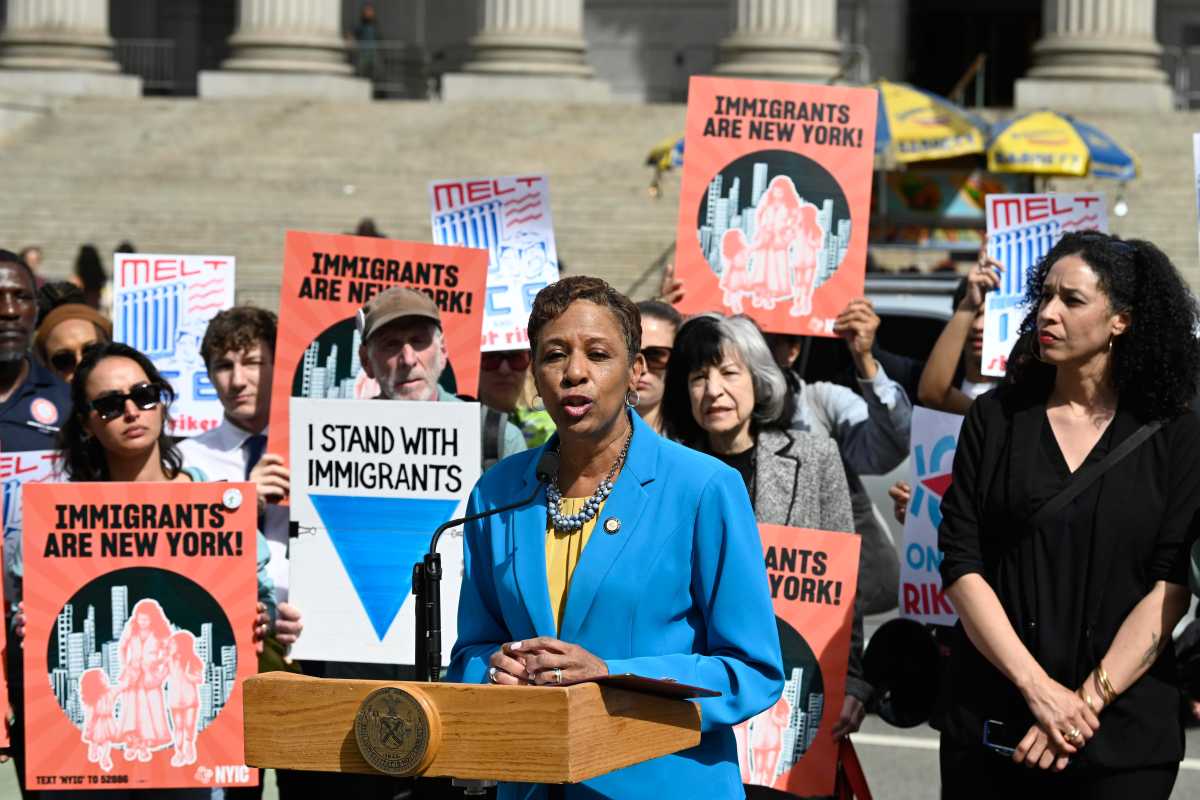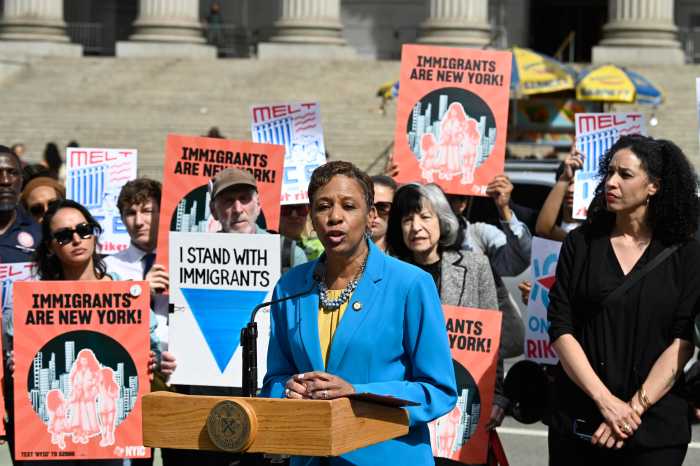New Yorkers are continuing to feel the burden of rising gas prices, as the cost to fill up their vehicles has continued to rise at an accelerated pace for the last two weeks — though, according to experts, the cost can go either way in the near future.
The typical gas station signs now read $3.63 dollars per gallon or more in Brooklyn, which represents more than a dollar increase since February of 2021. Fuel prices have reached their highest since 2014 around the country.
The insecurity brought by news last Saturday on the Biden Administration pausing new federal oil and gas drilling leases over a dispute with Republican-led states in court came after drivers were already worried.
Now, Russia’s invasion of Ukraine could halt imports from the world’s second largest fuel exporter, and have sent prices skyrocketing in Europe as countries around the world scramble to find alternatives.
“It is frustrating that our economy and our lives are still so dependent on gas or diesel prices in 2022,” said 39-year-old truck driver Roger Stuart, who drives a 2017 Freightliner Cascadia across New York State. “Renewable alternatives are not coming fast enough.”
Making matters worse for long-haul drivers, prices on highway stations outside the city are even higher than within the Big Apple.
The reason behind the recent surge is a combination of uncertainties from around the world.
The fear of repercussions from a European land war, as well as the stalled talks to renew a version of the Iranian nuclear deal (known as the Joint Comprehensive Plan of Action), has experts fretting a potential energy shortage, as American fuel reserves would only cover a few weeks’ needs since the market recovered after the pandemic tanked the oil market, according to Sarah Emerson, the president of the oil consultancy Energy Security Analysis.
Historically, global oil price trends hit consumers’ pockets within a week or two.
One glimmer of hope came from the January projections from the U.S. Energy Information Administration (EIA), which predicted that gasoline demand growth would slow down through 2022, driving prices down in the next few months.
Prices are expected to average at $3.06 dollars per gallon this year, which marks an increase from the $3 dollars average in 2021 — but is still lower than last year’s high of $3.43 in the Five Boroughs, according to the New York State Energy Research and Development Authority. This trend is expected to continue and keep prices dropping down to $2.80 dollars in 2023, nationwide.
The EIA forecasts that there will be more driving in the U.S. in 2022 and 2023 than there was before the COVID-19 pandemic, but that will be offset by the increase of more fuel-efficient cars, which will ultimately slow down the growth of gas demand.
And for Brooklyn motorists, the increase in gas prices may be a major factor in lowering total demand.
“What I have noticed in the last week is that the same volume of people come to get gas, but they get less than they used to,” said 48-year-old Gigi Clair, who has worked at a gas station on the corner of Bedford and Atlantic avenues for the last eight months. “People might be running tighter on what they can afford and keeping their fingers crossed until they make it home.”
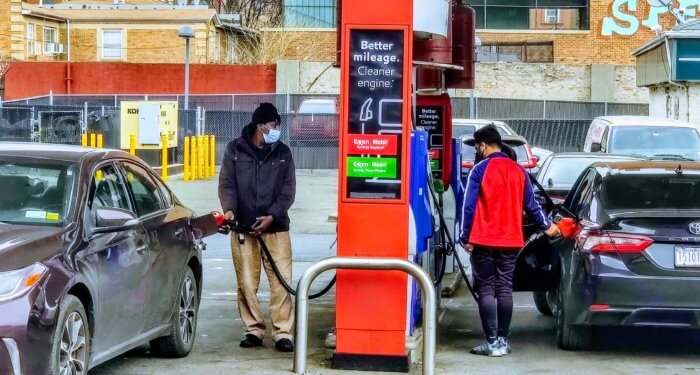
Malcom Reiner, 62, owner of an auto repair shop on Bedford Avenue, referring to gas prices.Photo by Ximena Del Cerro
Clair has stopped driving her car to work since the price surge, and says she will continue to take two buses to get back home unless gas prices drop back down to $2.75 dollars.
For others, however, public transportation is not an option.
Cristian Hidalgo, 42, is an Uber driver living in Crown Heights. He had to drive 4.4 miles before starting his workday to get to a gas station in Greenpoint, where gas prices reached $3.47 dollars on Thursday — slightly less than the $3.63 dollars per gallon at the stations in his area.
“I wouldn’t go out of my way if this was only happening for now, but it has been coming for a while and it seems like it might get much worse,” he said.
There are talks in Washington of suspending federal taxes on gasoline, which could help lower gas prices at the pump, at least for a while.
U.S. Sen. Ron Wyden of Oregon is putting a suspension on federal taxes on gasoline on the table, and there is growing bipartisan support for the idea of a “Gas Tax Holiday” — though the White House has not vocally supported the idea yet.
Yet the initiative of such a tax break may not be enough to extinguish the problems caused by the recent global conflicts, which, unfortunately for price-wary Brooklynites, comes at the same time that inflation is also on the rise. According to some estimates, inflation is kicking in faster than it has in almost 40 years.
Rising oil prices can account for nearly 30 percent of the inflation that the U.S. has seen since the pandemic began, according to market strategist Daryl Montgomery.
That phenomenon has led to an increase in costs for everyday items — meaning that gas prices are just one of several headaches ordinary citizens must deal with.
“Between electricity bills coming in more and more expensive and gas costing more every day, I don’t even know what I can afford at the supermarket anymore,” said 58-year-old Lorna White, a Bedford-Stuyvesant-based teacher and mother of three.
A version of this story ran on amNewYork as part of a series examining the impact of inflation on the working New Yorker and local businesses, titled “Everything is Too Damn High.”


